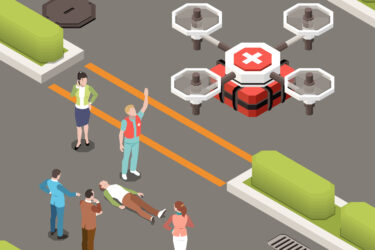The demands that technology places on care providers often are at odds with the human connection necessary for them to do their jobs properly. How to strike a balance?
That was the question panelists discussed at the compelling panel, “Humanizing Medicine in a High Tech World,” during AHCJ’s Health Journalism 2017 in Orlando.
Analia Castiglioni, M.D., explained how medical schools could serve as a model in this area. Castiglioni is director of clinical skills and simulation center and associate professor at the University of Central Florida’s College of Medicine.
The medical school, which is the newest in the country, has emphasized the importance of compassionate care even as it deploys the latest technology to teach students. For instance, new medical students at the beginning of the year contribute to a large chalkboard exercise words they think express what it means to be a good doctor, such as “ethical” and “caring,” Castiglioni said. Those words stay on the chalkboard all year as a reminder of their original intent.
The program also weaves humanism into the curriculum, with opportunities for students to go on medical missions to the Dominican Republic or provide patient care at a low-income clinic in Orlando. End-of-life care is taught, and the families of loved ones who donated their bodies to the medical school are invited to an end-of-year ceremony with the students.
“We have a lot of really rich discussions on humanism,” Castiglioni said.
Technology, if used appropriately, can add compassion to the patient care experience, panelists said. A children’s hospital in Orlando is adopting computer games and video conferencing to improve communications with patients and families. Nemours Children’s Health System has deployed smartphone and tablet apps to alleviate anxiety about procedures, said Daniel J. Podberesky, M.D., Nemours’ radiology department chairperson.
One app, developed in-house, is an interactive game that shows young patients what to expect during their visit. The game includes avatars of radiologists and technicians and an animation of the MRI machine. The second app, called Ease, provides regular video updates from providers to parents and guardians while their children are undergoing procedures.
“We use Ease every day in the operating room and in radiology because so many children have to be put under for imaging like MRIs,” Podbersky said. “It’s immensely helpful to ease stress and anxiety for parents waiting outside.”
Podbersky noted the Ease app only is available to parents who already have smartphones or a tablet, and its cost is a factor yet to be addressed.
Technology can be immensely helpful to connect patients to potential organ donors, said Bobby Nibhanupudy, M.D., medical director of abdominal transplantation at Florida Hospital Transplant Institute in Orlando. Technology can make sick people feel more human, he added. Scientists are developing artificial kidneys and pancreases to replace human organ transplants, he noted, and in the not too distant future, 3D printing could produce viable organ replacements.
“Are we going to become cyborgs? No,” Nibhanupudy said. “We know that for our patients, quality of life matters. We’re trying to bring people as close to normalcy as possible.”
See tweets from this panel for more tips.
Health Journalism 2017
- Cinematic techniques can add pop to stories, says Pulitzer winner
- panel explored humanizing medicine in a high-tech world
- #AHCJ17 panelists wrestle with the unintended consequences of complying with MACRA
- #AHCJ17 panel addresses the cycle of toxic stress in young children
- What’s next for drug costs? #AHCJ17 hears from the experts – including a patient
- Feeding hungry seniors and much more, one knock on the door at a time
- Social workers can help bridge crisis and care, say panelists at #AHCJ17
- Freelancers weigh in on what it takes to successfully write a book at #AHCJ17
- Public health experts discuss ‘infectious nature’ of violence
- #AHCJ17 panels to address importance of social determinants
- Is value-based pricing doomed? #AHCJ17 session to address this question
- Panel to examine MACRA, the physician payment overhaul law
- Panel to look at the economics of health disparities
- Journalists to learn about security, privacy tools and practices









